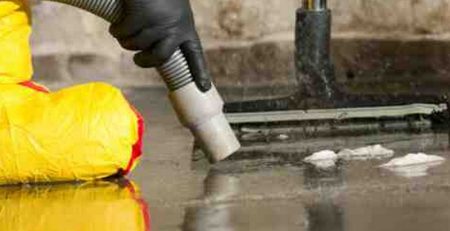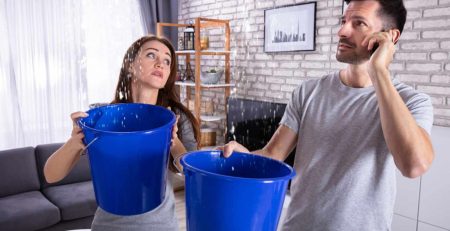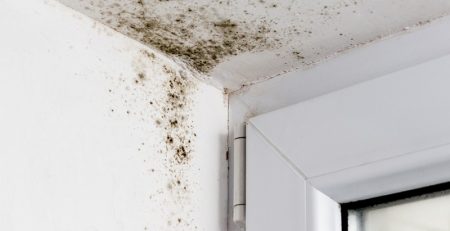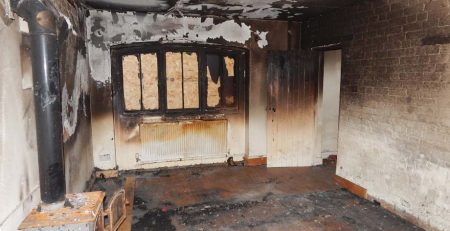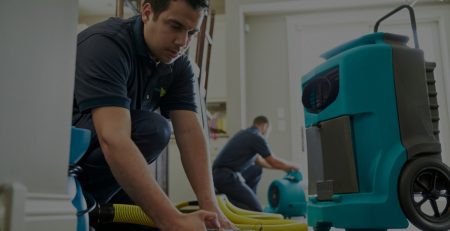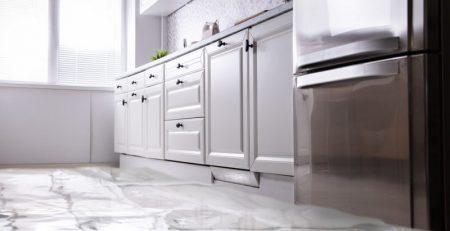The Ultimate Checklist: What to Do When You Come Back to a Flooded House
The Ultimate Checklist: What to Do When You Come Back to a Flooded House
We understand that experiencing a flooded house can be a traumatic and overwhelming event. If you find yourself in this situation, it is essential to act quickly and take necessary precautions to prevent further damage and ensure your safety. In this article, we will provide you with a comprehensive checklist of what to do when you come back to a flooded house.

Assess the Safety Risks
Before entering the flooded area, you need to ensure that it is safe to do so. Turn off the power supply and gas to the house to avoid electrocution or fire hazards. Also, make sure that the structure of the building is stable and not at risk of collapsing.
Document the Damage
Take photos and videos of the damage as evidence for insurance purposes. This will also help you remember the extent of the damage and the items that have been affected.
Call Your Insurance Provider
Contact your insurance provider as soon as possible to report the damage and seek advice on the next steps to take. Your insurance provider may send a representative to assess the damage and start the claim process.
Remove Standing Water
If the water level is not too high, you can start removing the standing water using a wet vacuum or a pump. Be careful not to damage the floors or walls while doing so. If the water level is too high, it’s best to call a professional restoration company to remove the water and dry the area.
Dry the Affected Areas
Once the standing water has been removed, you need to dry the affected areas thoroughly. Open windows and doors to allow air to circulate. Use fans and dehumidifiers to help dry the area faster. If the weather is dry and warm, you can also open windows and doors to let the sun dry out the area.
Remove Wet Items in Flooded House
Remove any wet items, such as furniture, carpet, and personal belongings, from the affected areas. It’s best to move them outside or to a dry area to prevent further damage and mold growth.
Clean and Disinfect
Once the area is dry, clean and disinfect all surfaces, including floors, walls, and furniture. This will prevent mold growth and help restore the area to its pre-flood condition.
Prevent Future Flood Damage

To prevent future flood damage, you can take several steps, such as installing flood barriers, waterproofing the basement, and ensuring proper drainage around the house.
In conclusion of Flooded House, experiencing a flooded-house can be a daunting task. Still, by following the steps outlined in this article, you can mitigate the damage and restore your home to its pre-flood condition. Remember, safety comes first, so always ensure that the area is safe to enter before attempting any cleanup activities.
Relevant service Flooded House
FAQ
What to do if your house is flooded by water?
ANS: If your house is flooded by water, the most important thing to do is to get yourself and your family out of harm’s way. Make sure everyone is safe and secure before attempting to address the flooding.
Once you have secured the safety of those in your home, contact emergency services such as a plumber or water damage restoration company for help. They will be able to assess the extent of the damage and provide advice on what needs to be done to repair it. Additionally, they can provide emergency services such as pumping out excess water or providing temporary solutions like sandbags or tarps.

Finally, assess any belongings that may have been damaged by the flooding and take steps to protect them from further damage. Move furniture away from wet areas and remove any items that cannot be salvaged so they don’t cause further damage. Contact your insurance provider if necessary and document any losses with photos or videos for future reference.
How do you dry out a flooded-house?
ANS: Drying out a flooded-house can be a long and difficult process. The first step is to remove all the standing water, which can be done using a wet/dry vacuum or by mopping up the water. Once the water has been removed, fans and dehumidifiers should be used to help dry out the remaining moisture in carpets, furniture, walls, and other surfaces. It’s important to run these machines for several days in order to completely dry out the house.
If any items were damaged by the flood, they should also be removed from the house as soon as possible in order to prevent mold growth. Finally, once everything is dry and all damaged materials have been removed, it’s important to inspect for any structural damage that may have occurred due to the flooding. This could include checking for cracks in walls or ceilings, signs of mold growth, or weakened support beams.
Can you get sick from being in a flooded-house?
Yes, it is possible to get sick from being in a flooded house cleanup. Floodwater can contain a variety of contaminants such as sewage, chemicals, and other pollutants that can lead to illnesses if they come into contact with your skin or are ingested. In addition, mold growth can occur after a flood, which can cause respiratory problems and other health issues if you are exposed to it. It is important to take safety precautions when entering a flooded home and to seek medical attention if you experience any symptoms of illness following exposure.
Can you get sick from being in a flooded house?

ANS: Yes, you can get sick from being in a flooded-house. Flood water often contains bacteria and other contaminants that can make you ill if it comes into contact with your skin or is ingested. Additionally, mold and mildew can grow in wet environments, creating an additional health hazard.
The best way to prevent illness from a flooded house is to avoid contact with the flood water as much as possible. Wear protective clothing such as rubber boots, gloves, and long pants when entering the house and wash your hands thoroughly afterwards. If the flood water has been contaminated by sewage, it’s best to avoid the area altogether.
If you do come into contact with flood water or live in a flooded-house for an extended period of time, watch for signs of illness such as fever, nausea, vomiting, abdominal pain, or skin rashes. Seek medical attention if any of these symptoms occur.
Can floods destroy homes?
Ans:
Yes, floods can certainly destroy homes. The extent of the damage depends on a variety of factors such as the severity of the flood, the type of construction materials used in the home, and how well it was built to withstand flooding.
For instance, if a home is made with wood or other porous materials that absorb water easily, then it will likely suffer significant damage during a flood. If a home is made with sturdier materials such as concrete or brick, then it may be able to withstand some flooding without sustaining major damage. However, even these types of homes can be destroyed if they are subjected to enough water pressure from a severe flood.
In addition to material considerations, the way that a home is constructed also plays an important role in determining its ability to withstand flooding. Homes that have been built on stilts or raised foundations are much better equipped to handle floods than those that are built directly on the ground.
Best flooded house clean up?
Ans: The best approach to cleaning up a flooded-house is to first assess the damage and determine whether it is safe to enter the home. If it is safe, take steps to minimize further damage by removing any furniture or items that have been affected by the water. Then, begin extracting the water from the house using pumps, vacuums, and other equipment.
Once all of the water has been removed, you can begin cleaning and sanitizing all affected surfaces with a mild detergent solution. After this process is complete, you may need to replace drywall or flooring that has been damaged beyond repair. Finally, use fans and dehumidifiers to help dry out any remaining moisture in the air. Taking these steps should help ensure your home is restored back to its original condition as quickly as possible.



